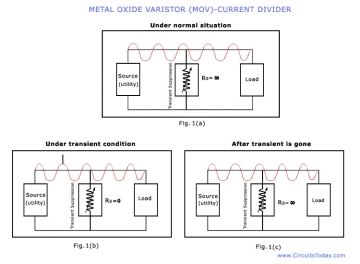News
- 2010-09-08 17:26:56
-

The truth about MOVs (Metal Oxide Varistors)
1.MOVs "wear out" with time, and should be replaced before they fail.
The manufacturers of MOVs publish MOV surge degradation curves, sometimes called "lifetime ratings", or "pulse ratings"1. These curves show the number of surges that the manufacturer says their MOVs should survive at various surge levels.
Mysteriously, when these very same Metal Oxide Varistors are installed in a powerline surge suppression product, it has been claimed that the MOVs do not degrade, can last 1,000 surges, etc. But curiously, the surge suppressor manufacturer seems unwilling to subject their product to an independent test lab for verification of their outrageous claims. Don't believe them. Demand to see independent proof!
2.There is no practical way to know how many surges an MOV has already intercepted and how large those surges were.
3.There is absolutely no practical way to determine how much degradation has taken place in an MOV, or how much surge life is left in the MOV. If anyone states otherwise, demand to see proof! Verify that proof with an independent, reliable source.
4.Since there is no way to tell how much life is left in an MOV, the ONLY conclusion that can be drawn, is that continued use of such a product is simply a gamble.
5.MOVs have proven to be so unpredictable, unsafe and ineffective that UL (Underwriters Laboratories, Inc.), CSA (Canadian Standards Association), and the Federal Government are all issuing strengthened specifications relating to powerline surge suppressors, all to become effective in 1996.
a) UL is issuing their new UL 1449, second edition. They are attaching to that specification an optional testing service3, to allow manufacturers who want UL to certify their performance to reasonable levels of endurance in 1,000 surge increments.
b) CSA is requiring all surge suppressors pass 3 surges of 6,000 volts, 3,000 amperes. A new test, with the implication being that many of the products previously would not meet even this minimum standard.
c) The Federal Government has defined three grades of surge suppressor, and three classes within those grades5. A product must pass 1,000 surges as called out in the following chart to qualify for the Grade A, B, or C designation. Class 1 is a suppressed voltage rating of 330 volts. Class 2, 400 volts, and Class 3 is 500 volts. Grade A, Class 1 is the best.
- Previous [Return Home] [Print] [Go Back] Next
Contact Us
Contact Person:
Miss Li MeizhenTel:
86-769-82825339- 82825369
- 18929453899
Fax:
86-769-82829959Email:
nanalee.mc@163.com


